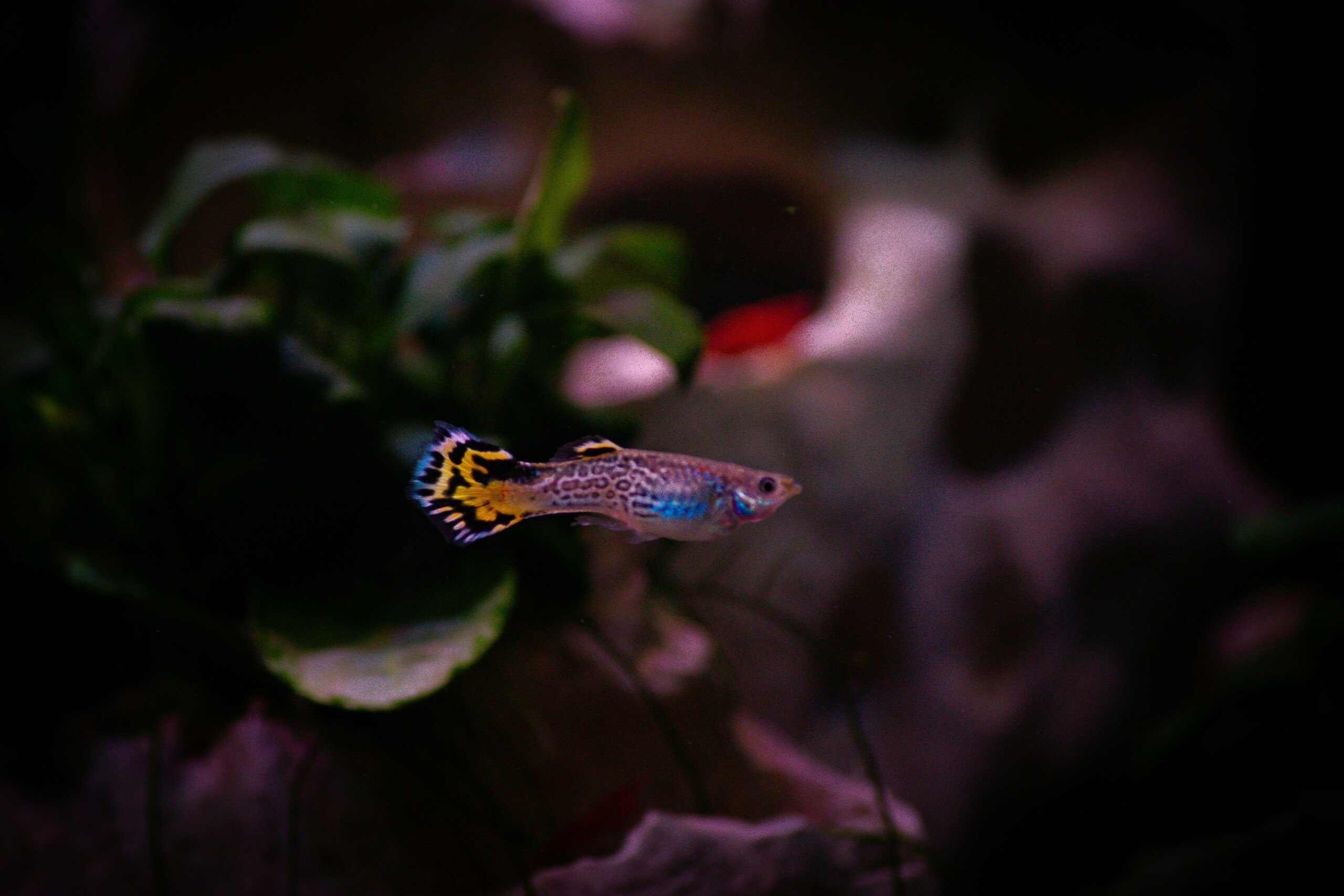

If you’ve ever strolled near the sewage outlets just outside Iquitos, you might have come across a vibrant spectacle: wild guppies, darting through the water, flaunting their brilliant array of colors. But these eye-catching fish have a fascinating backstory. They’re not native to Iquitos or even the Amazon. Originally from the east coast of Brazil and parts of the Guianas, guppies were introduced here—most likely by someone in the aquarium trade or a pet owner. Since then, they’ve adapted to their new environment, thriving in the wild and reverting to their natural, “wild-type” state.
A Rainbow Beneath the Surface
One of the most captivating features of these guppies is their dazzling colors. Local populations are a kaleidoscope of pink spots, iridescent blues, purples, oranges, and reds. Some males sport all these hues, while others display only one or two. And yes, it’s the males putting on this vibrant show—it’s all part of their strategy to attract females.
Interestingly, the color patterns of guppies are influenced by their environment. Studies have shown that in habitats with predators, male guppies tend to be less colorful, prioritizing camouflage to avoid becoming a meal. But in predator-free zones, they become more extravagant, focusing entirely on wooing mates. Around the sewage outlets near Iquitos, predators seem scarce—possibly due to heavy fishing or the unpleasant environment—allowing these guppies to shine without fear.
The Guppy’s Endless Cycle
Guppies are famously prolific breeders. Males are relentless in their pursuit of females, to the point where hobbyists keeping guppies in aquariums know to maintain a higher ratio of females to males to avoid stress and even death among the females. If there are no females around, males may even turn their attention to each other.
Female guppies, meanwhile, are almost always pregnant. They give birth to live young rather than laying eggs, which gives them a significant advantage in maintaining their populations. This reproductive strategy has allowed them to thrive around the sewage outlets, where they breed and multiply rapidly.
A Food Source for Fish Farms
Interestingly, these guppies are not just thriving in their adopted home—they’re also serving a practical purpose. Around Iquitos, there’s been a rise in fish farms, encouraged by government grants to promote sustainable aquaculture. These farms often rely on guppies as a cheap and abundant food source for larger fish. Fishermen regularly catch guppies near sewage outlets to supply these farms, which helps reduce the pressure on native fish species like paco and boquichico that are becoming increasingly scarce in the wild.
A Sustainable Solution?
Despite years of being fished for fish farms, guppy populations near Iquitos show no signs of decline. Their ability to bounce back quickly makes them a potentially sustainable resource. In fact, relying on guppies as fish feed might be a more environmentally friendly solution compared to using fish meal imported from overfished ocean stocks near Lima.
While guppies are an invasive species, their presence in Iquitos may actually have some ecological benefits. By providing a reliable food source for fish farms, they could help alleviate pressure on struggling native fish populations.
Conclusion: A Colorful Invasion
The wild guppies of Iquitos are a fascinating example of how an invasive species can adapt and even find a niche in its new environment. With their striking colors and prolific breeding habits, these tiny fish have become an unexpected ally in the effort to sustain local fish farming. Though their introduction was unintentional, they’ve carved out a role that might just help balance the ecosystem—and brighten up the waters around Iquitos in the process.
So, the next time you spot these shimmering little fish near the city, take a moment to appreciate their resilience, beauty, and unexpected usefulness. Who knew an invasive species could make such a splash?










